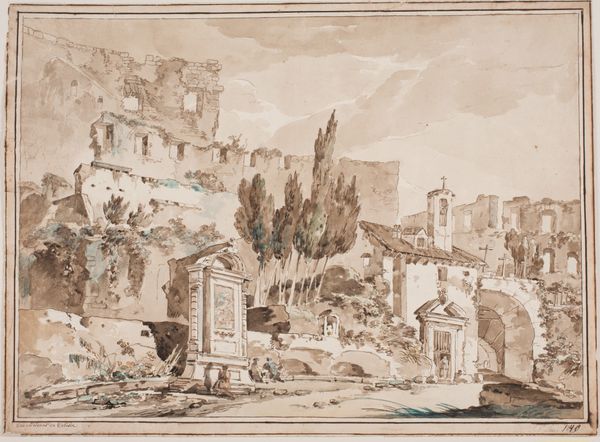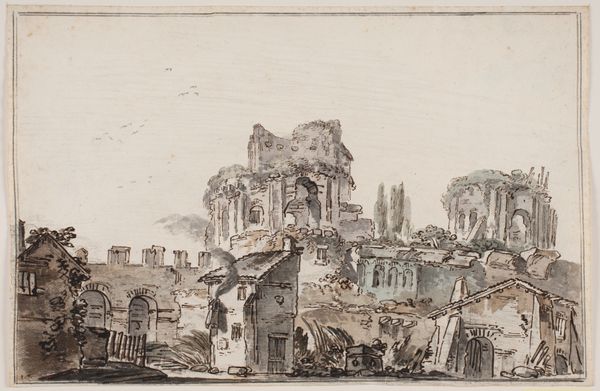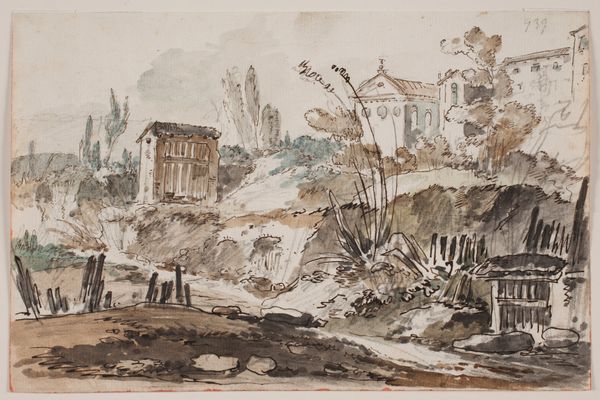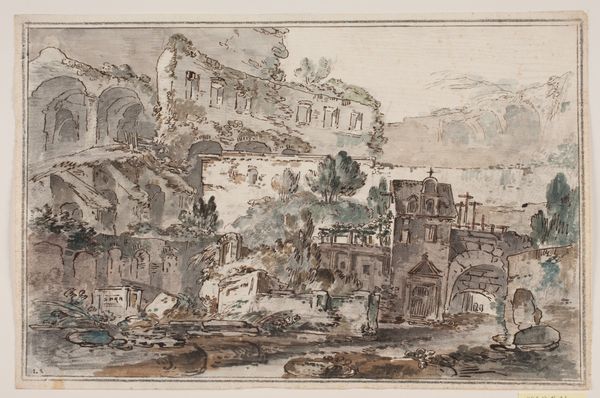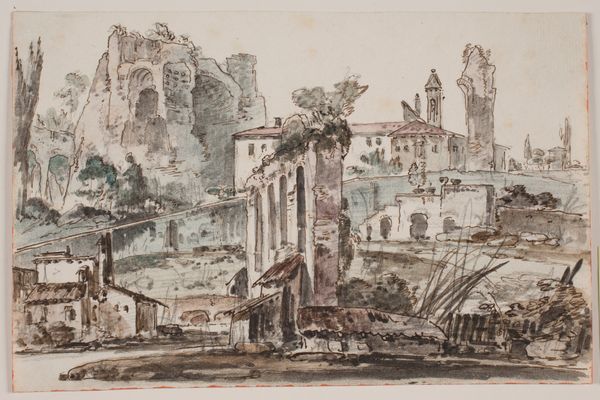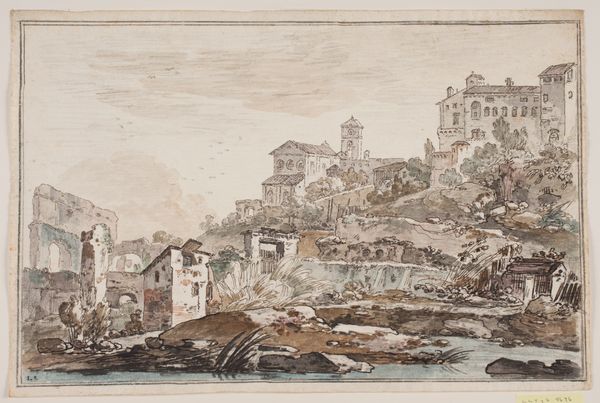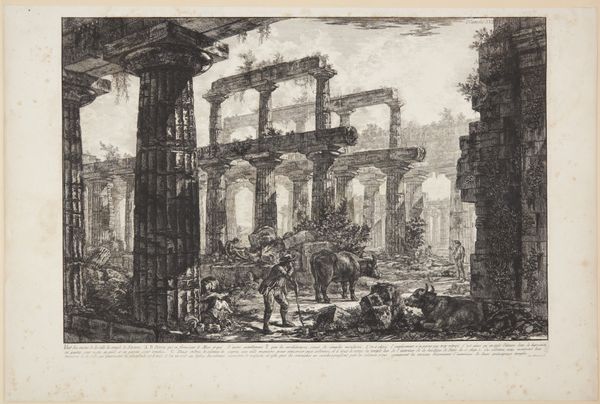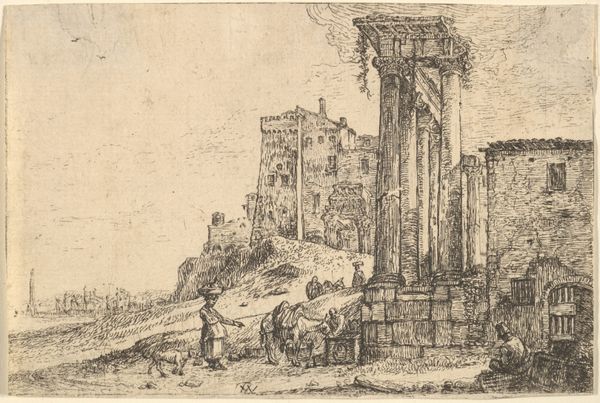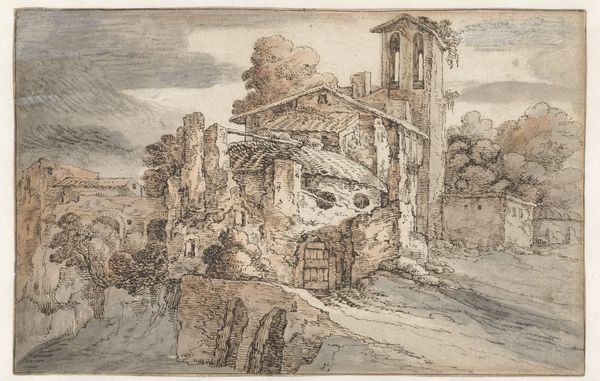
drawing, watercolor, ink
#
drawing
#
ink painting
#
neoclassicism
#
landscape
#
watercolor
#
ink
#
cityscape
#
watercolour illustration
#
academic-art
#
watercolor
Dimensions: 284 mm (height) x 427 mm (width) (bladmaal)
Editor: This is "Arkitekturkomposition, Rom" by Jens Petersen Lund, created in 1762. It's an ink and watercolor drawing of a cityscape. The crumbling architecture gives it such a melancholic, almost romantic feel. What do you make of this piece? Curator: That melancholic mood is spot on. Consider the late 18th-century fascination with ruins, especially Roman ones. It’s a reflection of broader cultural anxieties. Where do you think this romanticizing stems from? Editor: I guess it shows a loss of grandeur. It reminds us of lost power and decaying empires. Is that fair? Curator: Absolutely. This drawing functions almost like a visual history lesson, but one heavily filtered through emotion and a specific ideology. Note how Lund presents these architectural fragments – bathed in soft light, emphasizing their aesthetic qualities rather than their structural integrity. What sociopolitical role do you think such images played for its intended public? Editor: It's interesting you say that, because it appears more picturesque and artistic. Maybe it legitimizes a contemporary architectural style by referencing antiquity? Curator: Precisely. The selection, composition, and aesthetic treatment elevated specific ideals about civic order. Lund isn't simply recording reality; he's shaping perceptions and influencing contemporary taste by showcasing particular images. How does seeing the city of Rome framed in this manner, evoke feelings about its significance to European identity? Editor: That’s such a different lens than I would’ve used on my own. Now I see the layers, the social agenda, beyond just a pretty landscape. Curator: Indeed, and it highlights how art doesn’t just reflect society but actively participates in shaping it.
Comments
No comments
Be the first to comment and join the conversation on the ultimate creative platform.
